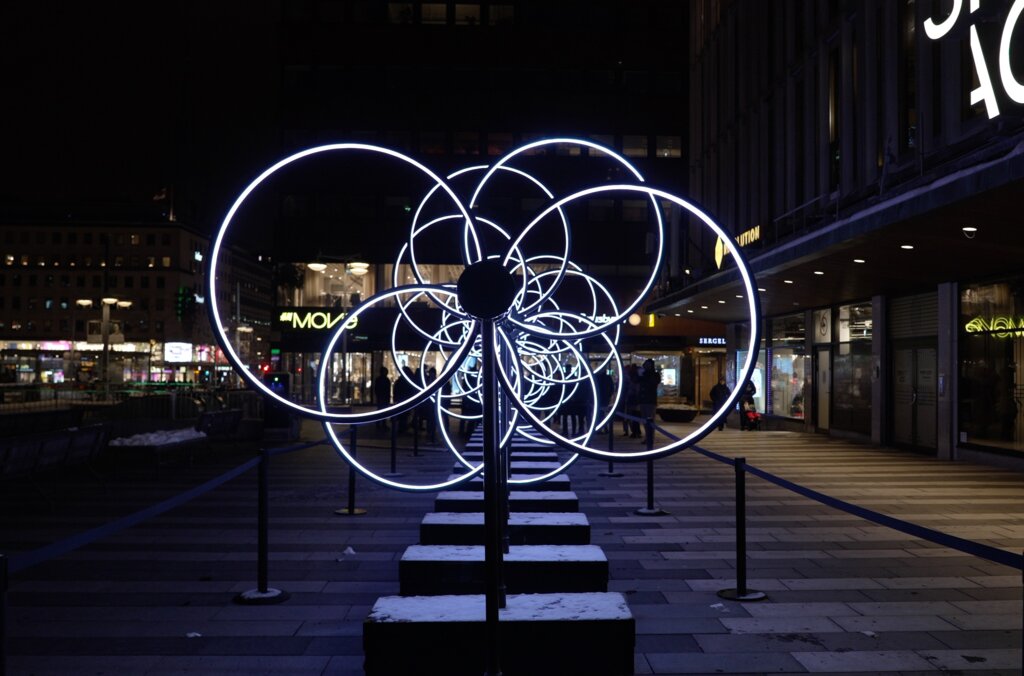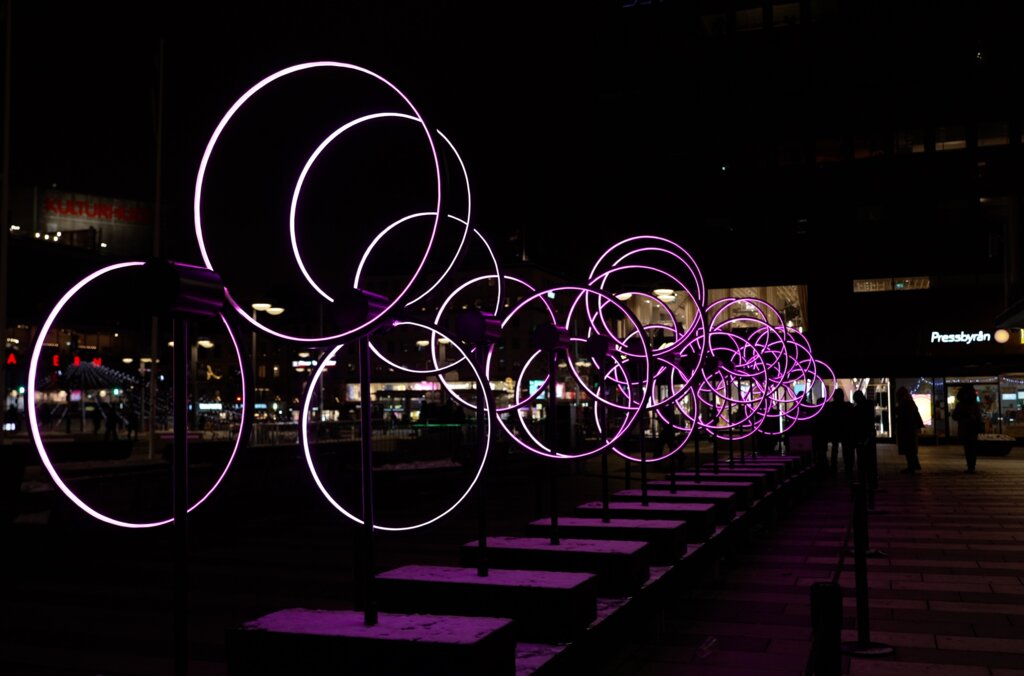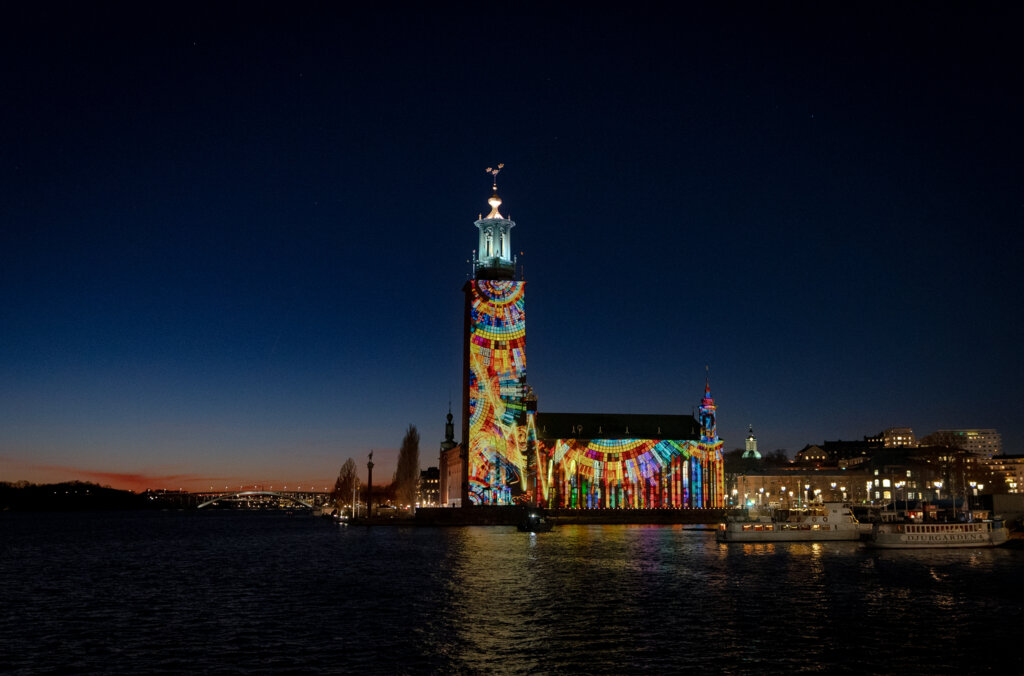
The artist Juan Fuentes is inspired by Op art from the 1960s that uses optical illusions to create a sense of movement to the eye. Beginning from a simple starting point, the circle, this artwork duplicates and rotates the simple shape to continually create new perspectives, geometric patterns and optical effects for the audience.
The way that the brain interprets what we see, including optical illusions, is the main question that David Hubel and Torsten Wiesel set out to answer in their Nobel Prize awarded research. Hubel and Wiesel discovered how individual brain cells communicate and process information, not just in the visual cortex but the entire brain. Their work has given us a better understanding of how the brain’s interconnectivity works.
NOBEL WEEK LIGHTS
6–14 December 2025
Discover all artworks in Nobel Week Lights 2025.

Juan Fuentes Studio
Juan Fuentes’ artistic practice is based on perception and geometry, evoking sensations, and immersive experiences for the audience. His works blur the boundary between the real and the virtual. His hallmark is the creation of kinetic light sculptures that generate a new interpretation of the public space thanks to technology.
Fuentes works on projects within biomimicry, using nature as a source of inspiration. His work is also characterized by self-production as he uses a variety of different artisanal technologies such as 3D printing, laser cutting and metal working.
In 2021, Fuentes received the 40under40 award as one of the top 40 young lighting designers in the world.

Nobel Week Lights
Art lighting up Stockholm
Read about Nobel Week Lights, a free light festival taking place in Stockholm during the darkest time of the year.